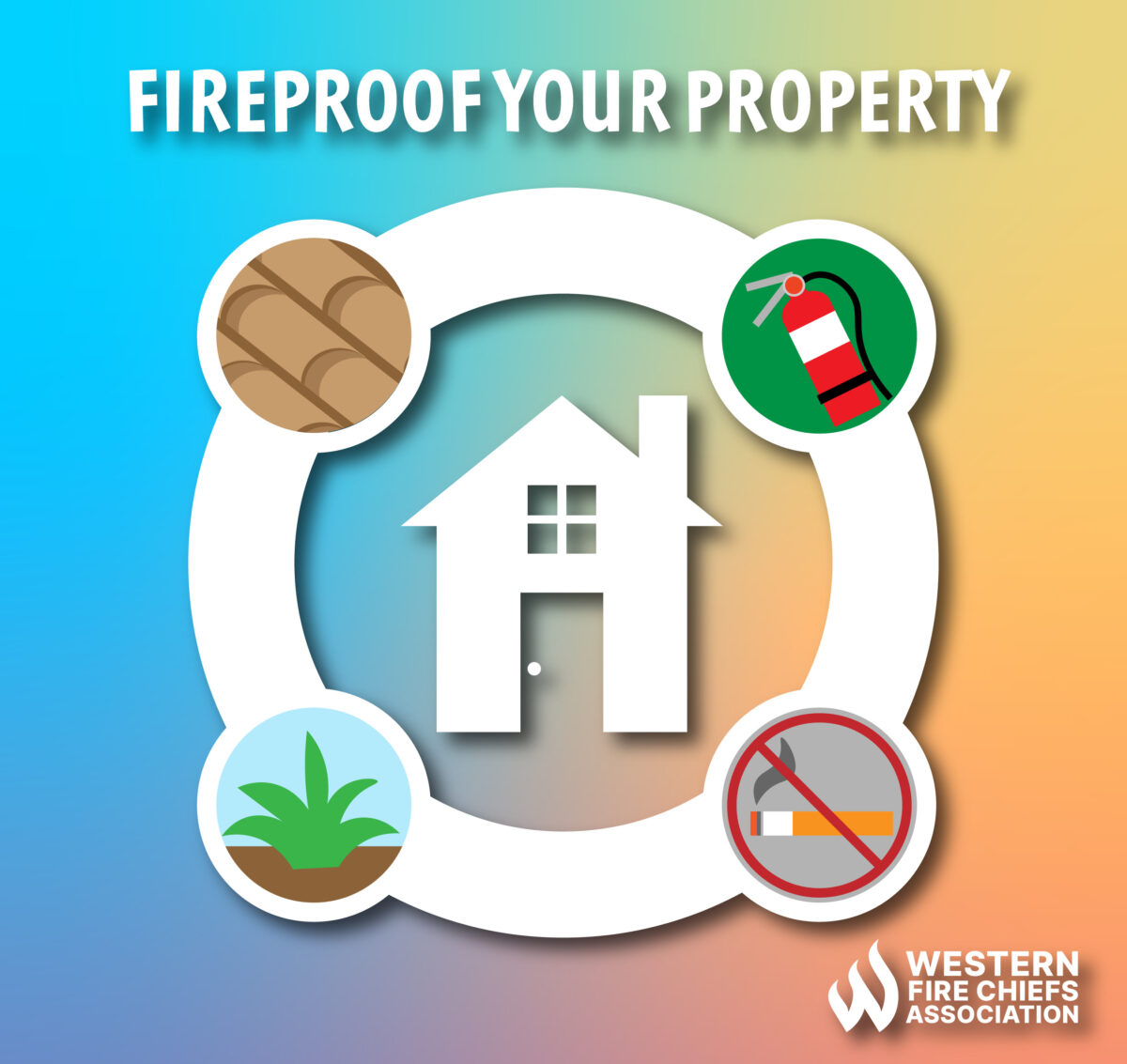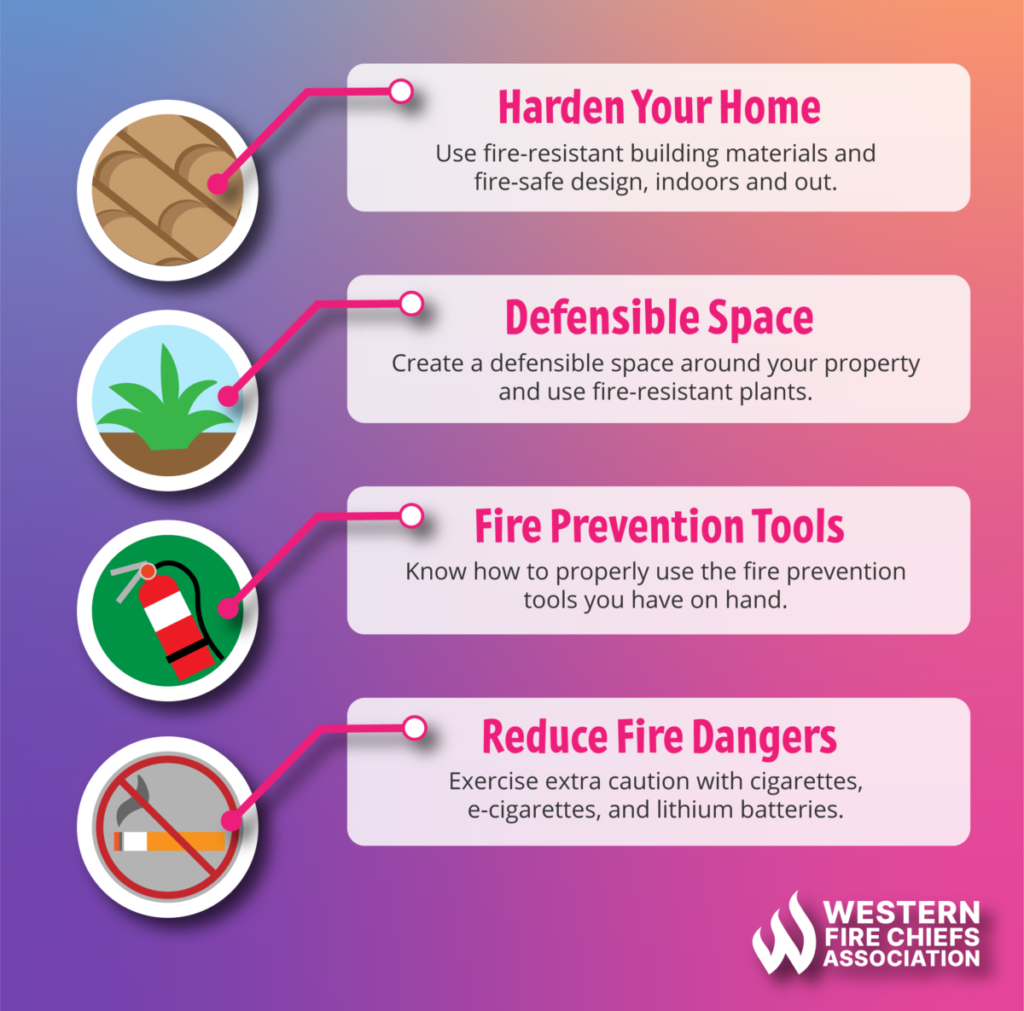Fire Pit Safety Tips
Stay safe around the campfire with tips from the Western Fire Chiefs Association. Learn essential precautions and practices for a worry-free outdoor campfire.
Find out if you can fireproof your property and protect your home from the dangers of fire with guidance from the Western Fire Chiefs Association (WFCA).
Published:March 17, 2023
Edited:March 1, 2024

Find out if you can fireproof your property and protect your home from the dangers of fire with guidance from the Western Fire Chiefs Association (WFCA).
Fires can threaten your home from outside or within. You can start preparing to respond to fire emergencies well before your property is at risk. Keep reading to learn some ways to mitigate home fire risks and protect your valuables during a wildfire evacuation.
Fireproofing is defined as the practice of reducing flammable materials to prevent or slow fires. There is no way to completely prevent the threat of fire to your home, but fire prevention practices can reduce the danger of fire threatening your property.
Many homes are built with fire safety in mind, from increased use of metal, concrete, and fiberglass in the buildings themselves to fire-safe roofing materials like corrugated metal, clay and cement tiles, asphalt, and composite shingles, or slate.1 The yard and property outside your house, as well as the way you structure the interior, all contribute to your home’s fire risk mitigation.
Along with wildfire risk mitigation practices that can defend your home’s structure from outside fire, it is important to consider how to practice fire safety within your home. A 2021 report from the National Fire Protection Association identifies the five leading causes of home fires: cooking, heating equipment, electricity, and lighting fixtures, intentional fires, and smoking.2 Consider the following steps to prepare for and protect your home from fire.
You can cultivate the area around your house to make a defensible space that protects your home from fire. Maintaining this space can slow or stop wildfires from spreading on your property and igniting your house.3
The Home Ignition Zone is a buffer of up to 200 feet around your house that you can cultivate as a defensible space to protect your home.4 Within the Home Ignition Zone, the Immediate Zone is the house itself and the space within 0-5 feet of the structure. No flammable materials should be stored in this area. The Intermediate Zone, between 5-30 feet from the house, is where you can use landscaping to prevent fire from spreading from your yard and plants to your house. The Extended Zone is 30 feet from the house and reaches up to 200 feet away. In this zone, you can interrupt fire, keep it from spreading rapidly, and reduce the size of the flames.
Fire-resistant plants do not ignite easily, and their foliage and stems do not contribute to fire intensity.5 Incorporating hearty, fire-resistant plants in your garden can reduce wildfire risk and slow the spread of fire close to your house
To prepare your home for the possibility of wildfires, you can implement home hardening techniques. Protect your house from flames, embers, and sparks by using fire-resistant building materials, a fire-safe home design, and fire-safe landscaping.6
There are a variety of fire extinguishers that are appropriate to use on a range of fires, from putting out ordinary combustible materials to extinguishing cooking oil fires.7 Be prepared and trained to use your fire extinguisher if necessary but do not attempt to extinguish a fire on your own if the flames are too large or the smoke is too thick. Ensure you have smoke detectors in good working order.8 Additionally, it is important to know how to turn off the gas and electrical power with the main circuit breaker in your house.9 Knowing these steps can help prevent fires and reduce fire risks in your home.
Fires caused by cigarettes or battery failure from an e-cigarette or vape cartridge are the leading cause of home fire deaths.2 To reduce the risk of a smoking-related fire in the home, discard used cigarettes in a container that will not burn or melt. While e-cigarette battery explosions are uncommon, the effects are extremely dangerous. Keep lithium batteries from getting wet, damaged, or exposed to extreme temperatures, and replace them if this happens. Do not charge an e-cigarette overnight or with a charger that was not designed specifically to charge e-cigarette batteries.10

If your house is threatened by fire, your first priority should be your own safety and the safety of the people who live with you. Safe evacuation during a wildfire emergency is a top priority. There are three levels of evacuation status based on how imminent danger is in your area. If you remain aware of the wildfires in your area, you may have more time to prepare and pack up your belongings. Here are a few ways to keep your belongings safe from fire damage.
Important documents, such as legal documents or government-issued documents like social security cards, birth certificates, and passports, are difficult to replace. You can preserve important documents or small valuable items in a fireproof safe. Look for a fire safe with a minimum 1-hour fire rating, to ensure it can withstand the heat.11 If you are in an area of high wildfire risk, consider storing some documents off-site in a safety deposit box instead of your home.
Some documents need to be replaced if destroyed by a fire. However, having scans of important documents will make the replacement process easier.12 Cloud storage is a possible option, or you can download important documents and pictures to a flash drive that is easily taken with you if you need to evacuate.
An area with few to no windows can help protect against smoke or soot damage if you have large valuables.11 Consider closets or bathrooms as a place to store valuables during a wildfire evacuation to help protect them from fire.
Keep a record of valuables with photographs, detailed item descriptions, and purchase information or recent appraisals. These documents should be digitized, and your insurance may ask for a copy. You should keep these records updated.11
Homeowners insurance protects against some natural disasters, but as wildfire dangers shift with climate change, insurers can change and reduce policies without notifying policyholders. Regularly review your insurance to make sure your home and valuables are covered.12
Stay safe around the campfire with tips from the Western Fire Chiefs Association. Learn essential precautions and practices for a worry-free outdoor campfire.
Discover essential firework safety tips to ensure a dazzling display without accidents. Learn how to celebrate responsibly with expert guidance from WFCA.
Explore the role of AI in wildfire prediction with guidance from the WFCA. Learn how advanced algorithms and data analytics enhance early detection and response.